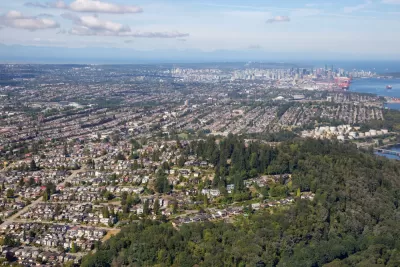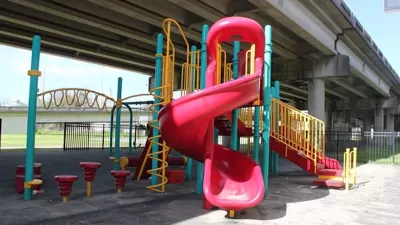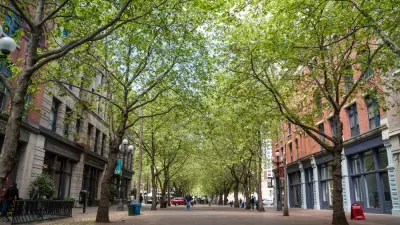Despite the well-documented impacts of traffic noise and pollution, Vancouver's housing policy effectively relegates multi-family apartment buildings to busy arterial roads.

"Instead of planning for housing options in locations that maximize the health and well-being of residents, policymakers are mandating that people who prefer more compact, energy-efficient, and lower-cost homes can only live on traffic-choked arterial streets—and must suffer all the bad health consequences," writes Daniel Oleksiuk of Vancouver's housing policy that recommends the construction of new multi-family apartment buildings on arterial roads as a "buffer" for noise and pollution. Yet research increasingly shows the detrimental impacts of exposure to traffic pollution, such as respiratory disease, cancer, and mental health impacts.
"This November, Vancouver City Council will vote on the Secured Rental Policy, a proposal to legalize six-story rental apartments on busy arterial roads and four-story rentals on the adjacent side streets." According to Oleksiuk, "[u]nless the draft Secured Rental Policy is amended to open up more of the city to multi-dwelling homes, Vancouver’s official position will remain clear: renters are fodder for protecting those fortunate enough to own detached houses on big lots."
Although some families might prefer to live on arterial streets close to public transit, Oleksiuk argues that "[t]he issue at play is one of choice: arterial streets should not be the only places where families living on lower incomes should be able to afford." With most Vancouver renters priced out of the single-family and condo markets, apartment dwellers are unfairly exposed "to the increased health risks that come from living on busy, arterial roads."
FULL STORY: CONFINING RENTAL HOMES TO BUSY STREETS IS A DEVIL’S BARGAIN

Alabama: Trump Terminates Settlements for Black Communities Harmed By Raw Sewage
Trump deemed the landmark civil rights agreement “illegal DEI and environmental justice policy.”

Planetizen Federal Action Tracker
A weekly monitor of how Trump’s orders and actions are impacting planners and planning in America.

The 120 Year Old Tiny Home Villages That Sheltered San Francisco’s Earthquake Refugees
More than a century ago, San Francisco mobilized to house thousands of residents displaced by the 1906 earthquake. Could their strategy offer a model for the present?

Ken Jennings Launches Transit Web Series
The Jeopardy champ wants you to ride public transit.

BLM To Rescind Public Lands Rule
The change will downgrade conservation, once again putting federal land at risk for mining and other extractive uses.

Indy Neighborhood Group Builds Temporary Multi-Use Path
Community members, aided in part by funding from the city, repurposed a vehicle lane to create a protected bike and pedestrian path for the summer season.
Urban Design for Planners 1: Software Tools
This six-course series explores essential urban design concepts using open source software and equips planners with the tools they need to participate fully in the urban design process.
Planning for Universal Design
Learn the tools for implementing Universal Design in planning regulations.
Clanton & Associates, Inc.
Jessamine County Fiscal Court
Institute for Housing and Urban Development Studies (IHS)
City of Grandview
Harvard GSD Executive Education
Toledo-Lucas County Plan Commissions
Salt Lake City
NYU Wagner Graduate School of Public Service





























